Abstract
Pigeons' pecks on either of two concurrently available response keys produced secondary reinforcers according to independent one-minute variable-interval schedules. Different secondary reinforcers, in the presence of which the rates of primary reinforcement were equal, were associated with each key. The rate of pecking maintained by each secondary reinforcer varied directly, but nonproportionally, with the number of primary reinforcements given in the presence of the secondary reinforcer.
Full text
PDF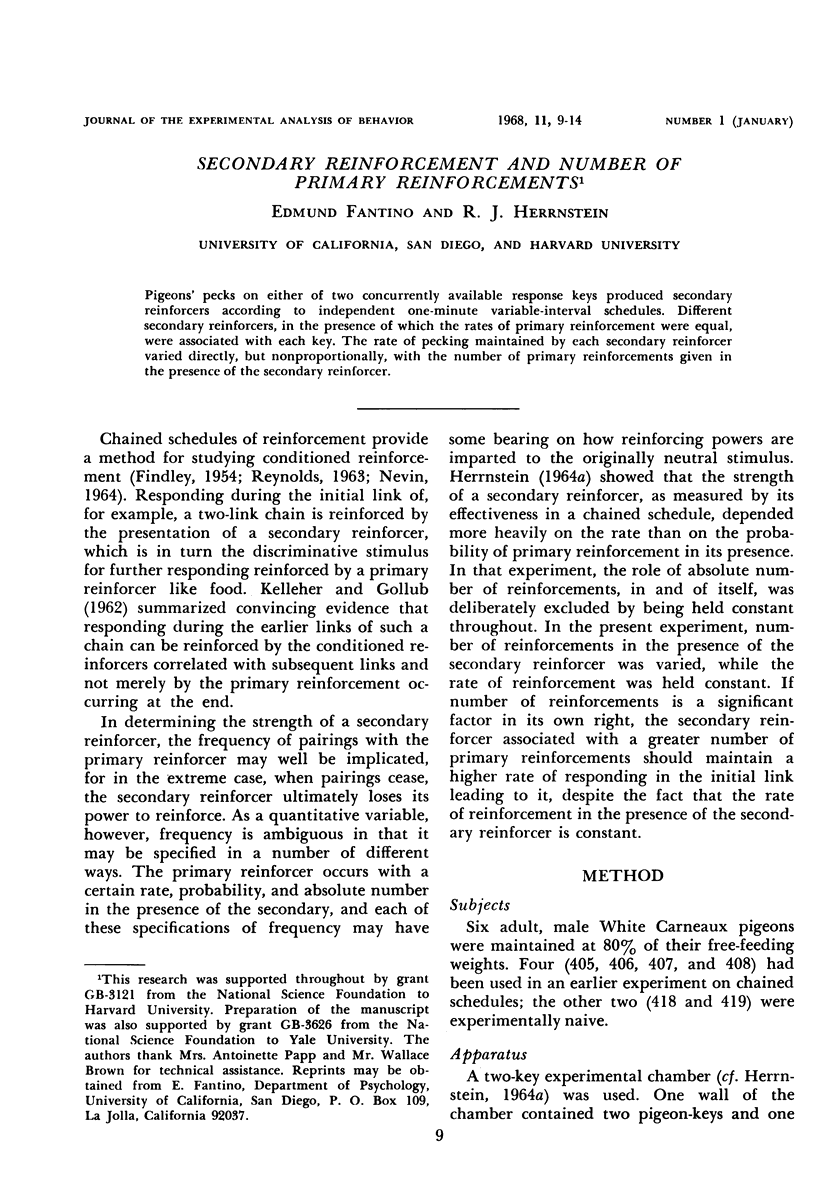
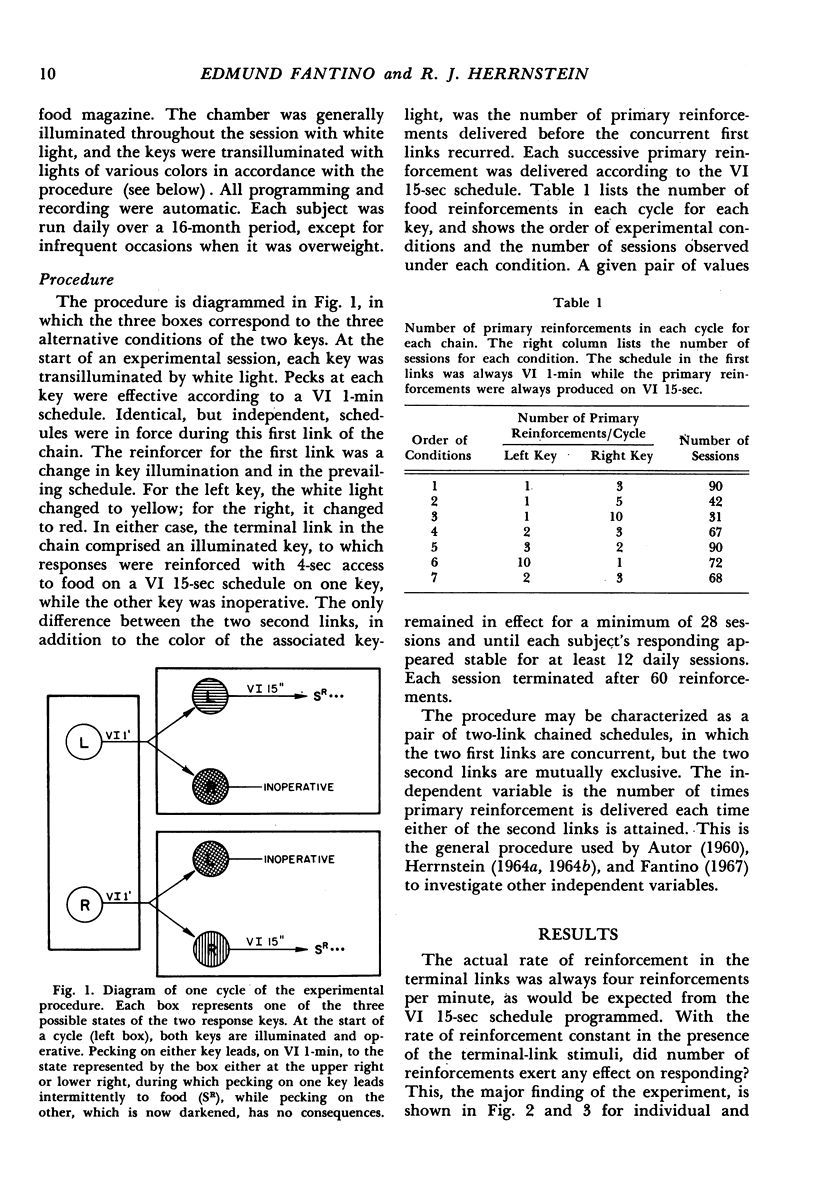
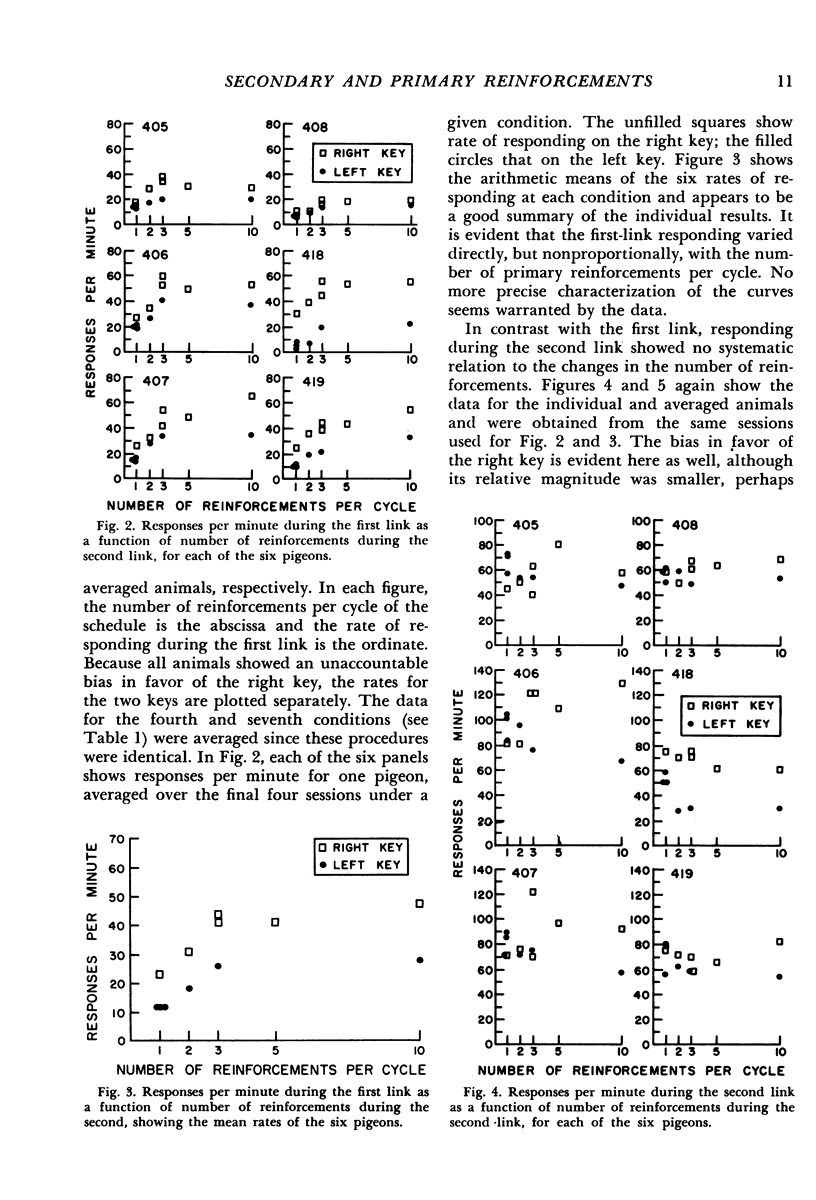
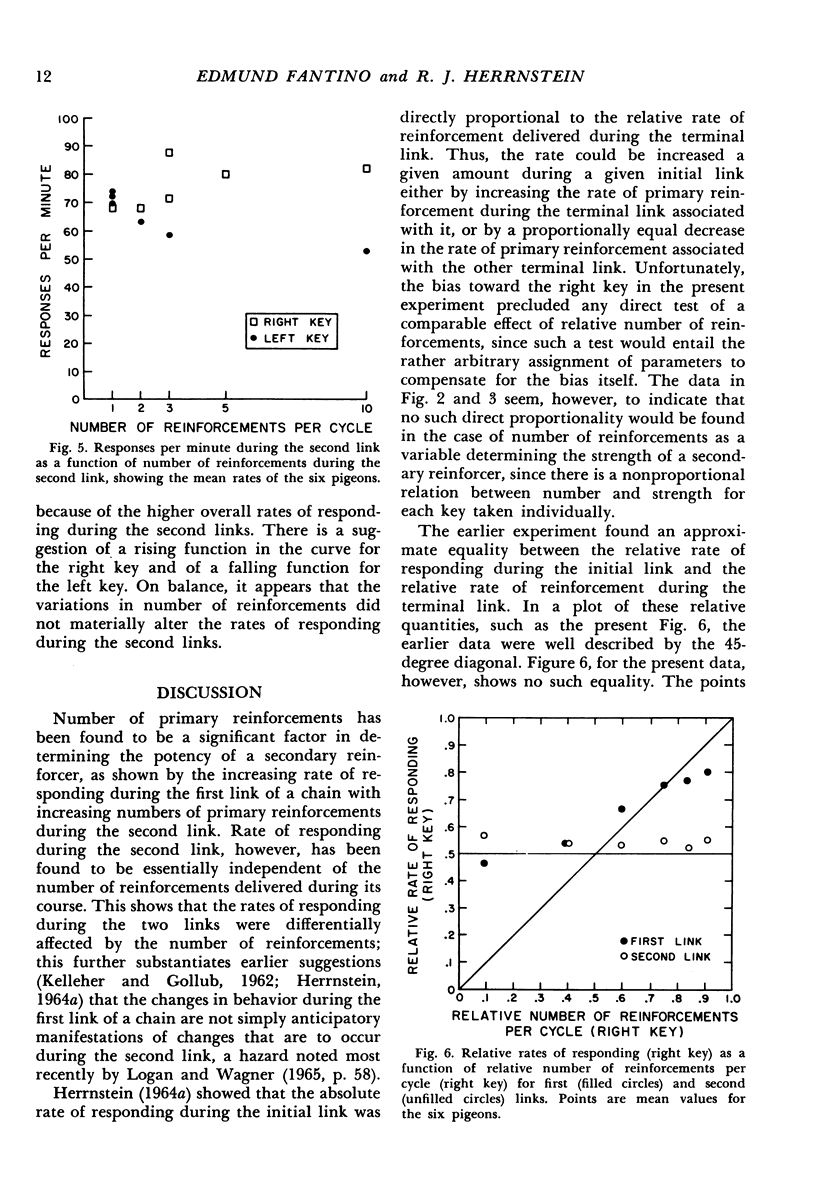
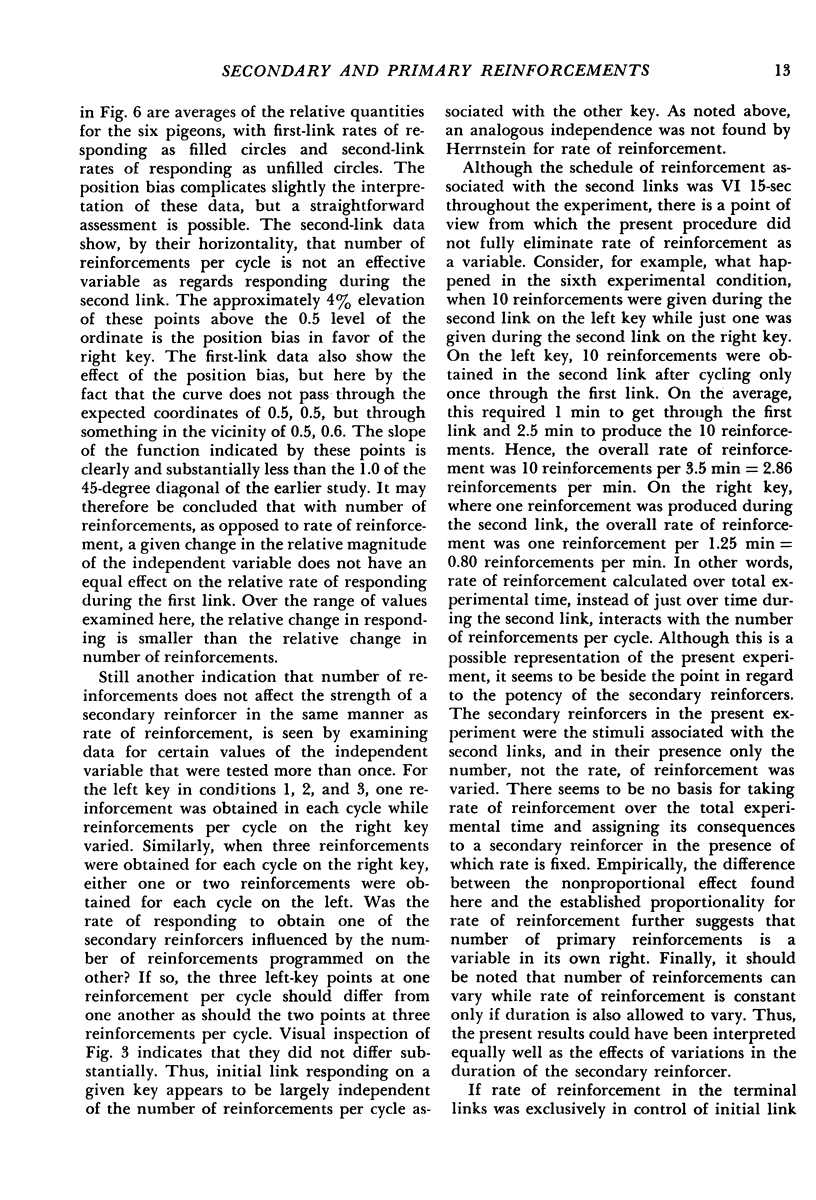
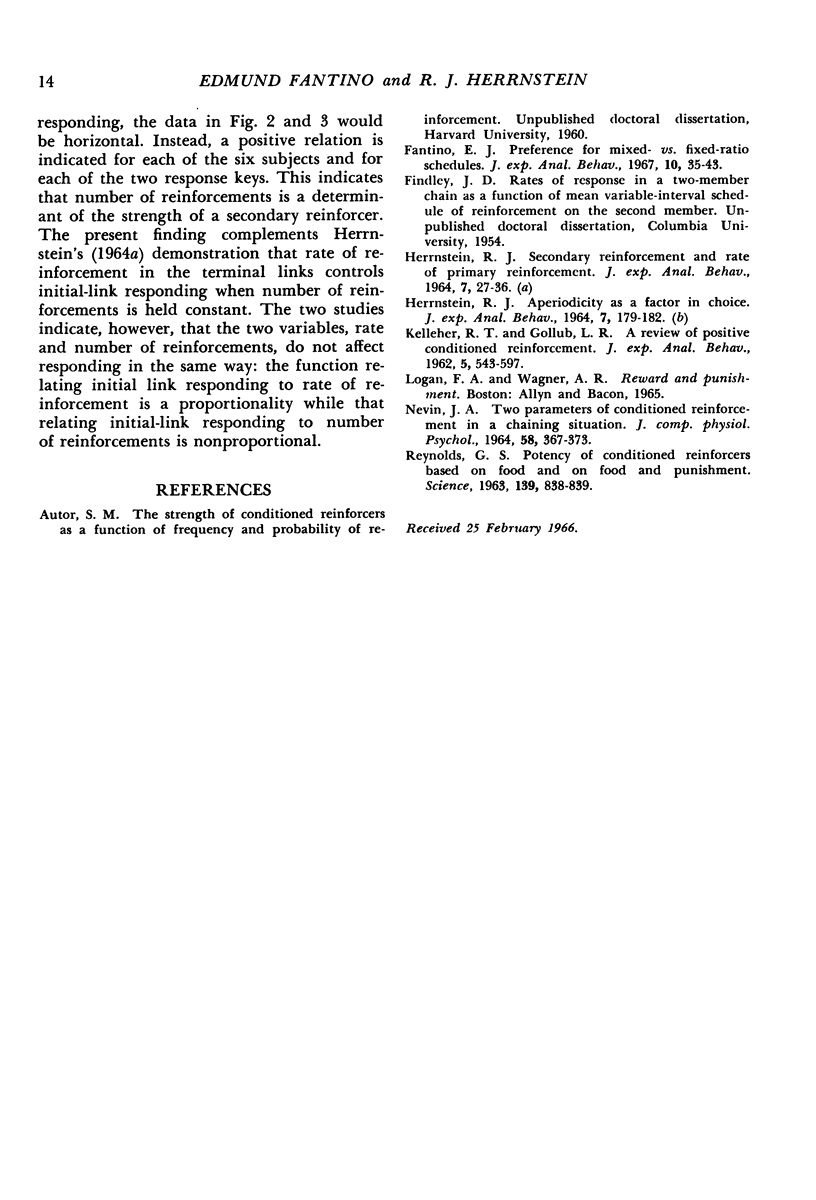
Selected References
These references are in PubMed. This may not be the complete list of references from this article.
- Fantino E. Preference for mixed- versus fixed-ratio schedules. J Exp Anal Behav. 1967 Jan;10(1):35–43. doi: 10.1901/jeab.1967.10-35. [DOI] [PMC free article] [PubMed] [Google Scholar]
- HERRNSTEIN R. J. APERIODICITY AS A FACTOR IN CHOICE. J Exp Anal Behav. 1964 Mar;7:179–182. doi: 10.1901/jeab.1964.7-179. [DOI] [PMC free article] [PubMed] [Google Scholar]
- HERRNSTEIN R. J. SECONDARY REINFORCEMENT AND RATE OF PRIMARY REINFORCEMENT. J Exp Anal Behav. 1964 Jan;7:27–36. doi: 10.1901/jeab.1964.7-27. [DOI] [PMC free article] [PubMed] [Google Scholar]
- KELLEHER R. T., GOLLUB L. R. A review of positive conditioned reinforcement. J Exp Anal Behav. 1962 Oct;5:543–597. doi: 10.1901/jeab.1962.5-s543. [DOI] [PMC free article] [PubMed] [Google Scholar]
- NEVIN J. A. TWO PARAMETERS OF CONDITIONED REINFORCEMENT IN A CHAINING SITUATION. J Comp Physiol Psychol. 1964 Dec;58:367–373. doi: 10.1037/h0046266. [DOI] [PubMed] [Google Scholar]
- Reynolds G. S. Potency of Conditioned Reinforcers Based on Food and on Food and Punishment. Science. 1963 Mar 1;139(3557):838–839. doi: 10.1126/science.139.3557.838. [DOI] [PubMed] [Google Scholar]


